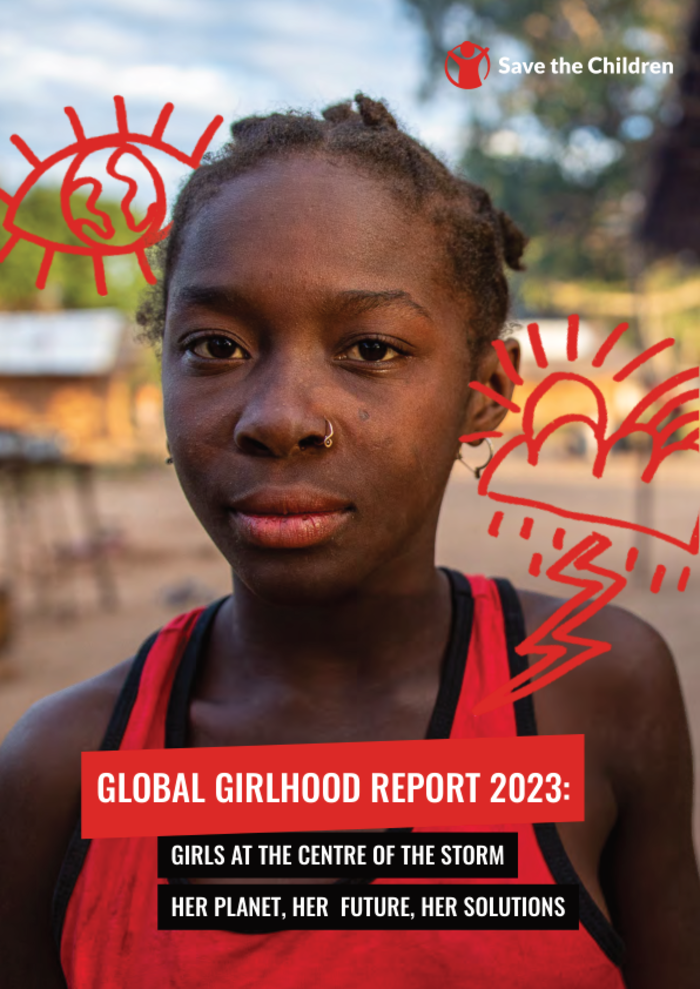Global Girlhood Report 2023 released by ‘Save the Children’ organization
The climate crisis is already changing girls’ lives and futures. Save the Children’s analysis shows that between now
and 2030, almost 60% of girls – that’s 931 million – will experience at least one extreme weather event, like flooding, drought or heatwaves.1 An estimated 4 million girls in lower income countries (countries where individuals have the smallest incomes) missed out on completing their education due to climate-related events in 2021.2 And right now, at least 49 million people, including girls and their families are on the brink of starvation, unable to learn and grow because longerlasting droughts and the war in Ukraine have combined to create a hunger crisis the size and severity of which has not been seen before.

The report focuses on the impact of the Climate Crisis on the lives of Girl children across the globe.
Key highlights:
- Climate Crisis impacts girls in various aspects e.g., Food Security, Poverty, Migration, Safety, Education, and Health.
- Child marriage is often seen as a coping strategy to reduce economic vulnerability and food insecurity that a family is facing because of a disaster.
- Globally, 9 million girls face extreme risks of climate disaster and consequently forced into child marriage every year.
♦ 2/3rd child marriages are to happen in regions with higher-than-average climate risks. - Almost 60% of girls globally will experience at least one extreme climate event
by 2030.
Lack of appropriate measures in climate change plans
Paris Agreement acknowledges the need to promote gender equality however, girls are not specifically dealt with in the agreement.
Gender Action Plan at COP25 only mentions girls in relation to their involvement
in science and technology for climate solutions.
Recommendations:
Making gender equality and protection from gender-based violence a central priority in climate action plans.
Investment in anticipatory actions to serve girls needs.
Supporting girls as decision-makers and feminist movements.
Around the globe, the impacts of more frequent climate disasters like floods, cyclones, wildfires and heatwaves are:
- Exposing girls to risk of sexual harassment and abuse in the chaos, overcrowding and lack of safe services in the aftermath of a disaster.
- Pushing families into poverty, which can lead to harmful coping strategies such as child labour and child marriage.
- Driving families and wider communities to leave their homes, forcing girls out-of-school and increasing risks to them such as child marriage and unions and other forms of gender-based violence.
- Reducing girls’ access to the food and services they need to be safe, healthy and make decisions about their lives and bodies.
How the climate crisis is increasing risk of child marriage?
In parts of Ethiopia worst hit by drought and food shortages, rates of child marriage rose by 119% in
2022 compared to 2021.
A 2020 study found that in Bangladesh, girls aged 11–14 were shown to be twice as likely to
marry in years following extreme heat.
In Zimbabwe, there have been recent reports of girls initiating their own marriages in the hope of
increasing their access to food.
Devastating floods in Pakistan in 2022 have since left an estimated 640,000 adolescent girls vulnerable and at increased risk of coercion, gender-based violence and child marriage.
Analysis of historical data shows that a 10% increase or decrease in rainfall is associated with a 1% increase in child marriage, globally.
10 global hotspots for climate change and child marriage
Bangladesh, Burkina Faso, Central African Republic, Chad, Guinea, Malawi, Mali, Mozambique, Niger,
South Sudan.
